Just over 30 years ago, avant-pop icons Stereolab released their debut album Peng! establishing the early hallmarks of the English-French band’s sound; 1960s pop harmonies, chorus-laden guitar riffs and a borderless world of analog electrics.
Helmed by longstanding members English songwriter and guitarist Tim Gane and French lyricist and vocalist Laetitia Sadier, Stereolab was born from the ashes of 80s indie pop band McCarthy after frontman Malcolm Eden called time on the band at the start of a new decade.
Spurred on by their shared stage antics, Gane and Sadier continued their creative collaboration forming a new musical collective together. Stereolab deftly crossed the line from indie to pop through to jazz and were one of the few groups in the Nineties as exploratory in their music-making as they were prolific in their output, releasing six studio albums across the decade alone (they’ve released 13 in total).
After a 10-year hiatus, the band reformed for live performances in 2019 to coincide with the remastered reissues of their albums released under Warp Records. Now ahead of a headline show in London and their curation slot at Utrecht’s Le Guess Who? festival later this month, the two co-founders open up about Nineties tribes, new-age technology and their lifelong affinity with music.
Cheri Amour: You mentioned previously that your early output was informed by Dada, an art form that championed artistic freedom as a direct reaction to World War I. Why did you feel inspired by that movement to start songwriting?
Laetitia Sadier: I found the Dada movement inspiring as it echoed my desire for freedom. But also the transgression of the straightjackets that a big part of humanity has either been made to wear or has worn on behalf of their ancestors without questioning its wider implications. Something needed to break free and they started chipping away at it unseen. Those post-modern ways brought the artistic discourse to a whole new level which made us observe ourselves with a fresh set of eyes that could penetrate corners of the psyche that hadn’t been reached in that godless way before. God was not in charge anymore. Technology was making huge breakthroughs. So it made us ask that question, who is in charge?
Tim Gane: My favourite Dada artist was Hannah Höch and in particular her photomontage work. Her collages bedazzled me long before I understood the wider meaning of Dada as a reaction to bourgeois society in general and the First World War. As a (sort of/kind of) musician only, it’s sometimes hard to analyse how something from a different medium affects your ideas in another.
Photomontage has the most direct affinity with the music I was into because of the whole punk and post-punk thing. It’s quick to re-assemble everyday images into hidden meanings and open up a whole new world of possibilities. Soon after (around the age of 14/15), I discovered Throbbing Gristle who incorporated these kinds of elements (and much else besides) into something approaching an atomic explosion of ideas. McCarthy, the group I was in immediately before Stereolab, was influenced directly by Dada in both the words of the music and our record sleeves which all came from that period.
The band rose through a swathe of sounds in the nineties from shimmering shoegaze to the beginnings of Britpop. What was it like performing in that scene and was there a certain musical tribe that you felt most connected to?
LS: We had no problem inscribing ourselves in the London scene at the time. There were lots of different bands that we felt close to each having their particular sound, from Th’Faith Healers to Gallon Drunk, Huggy Bear and Sun Carriage to all the American brothers and sisters who came by regularly such as Bikini Kill. (They didn’t come regularly enough actually!) Indeed there was some made-up scene the press had constructed, they called it Shoegaze which was a derogatory term at the time. They made up all these feuds that didn’t exist to sell their shitty papers (though once upon a time much more respectful of the music and its capacity to influence and provide meaning and purpose to people in society, particularly the youth). We didn’t completely realise it at the time but the music scene was thriving, and there was so much good music to be enjoyed most nights! In our own particular way, we were a part of that.
TG: We were at that time part of the North London music scene centred around Camden, Chalk Farm. Lots of clubs and upstairs and downstairs of pubs where bands played. Laetitia and I went up there at least three or four nights a week for years. Shoegaze and Britpop, in London anyway certainly had its origins there as that’s where most bands and fans gravitated to then. In the beginning, people associated us with Lush because we had two female singers but when we started playing people stopped thinking that. We stood out musically as we sounded different and audiences were intrigued by us.
In 1994, you performed as part of the infamous Lollapalooza lineups alongside The Breeders and Beastie Boys cementing your ascension as a band. How did those bigger, commercial events affect the dynamics of the group?
LS: We sure were a working band for many years and the dynamics could be a little difficult at times, probably because our egos had sharp angles, not yet graced with the wisdom we have now.
TG: Lollapalooza was a lot of fun to do and we played a lot – day after day for six weeks so it helped us gel as a live band. It’s important to keep in mind that we were on the small stage and mostly playing in car parks or faraway fields. There weren’t always that many people there and those who were there mostly threw balls and juggling. Sometimes some big bands came to see us play like the Beastie Boys and they seemed to like us. Once Nick Cave wandered over and stood at the front, he stayed for about two songs and left. We had the pleasure of seeing the Beastie Boys every night. They were brilliant. We would watch only the second half of the Breeders as they started 15 minutes before we finished every day and that was always a downer. We would hear the start of "Cannonball" in the middle of one of our songs and loads of people would go off and see them.
1996’s Emperor Tomato Ketchup represented a real shift in your sound as Pitchfork describes “consolidating international movements into people-pleasing new forms of funk.” Why did you decide to shift away from your motorik rhythms in this record?
TG: The short answer is I got fed up with doing them and couldn’t think of any new ideas for them. I still loved the idea of repetition but with this one-chord linear groove, we got stuck in one place. The LP before (Mars Audiac Quintet) wasn’t very satisfying for me in many ways and I realised we needed to move on to something else but I didn’t know what.
Around that time, I remember listening to Sun Ra a lot. I already had been since the 80s but this time one thing struck me about it, that you could construct little melody cells and link them together to form interlocking chains. The bass lines, lead lines, and vocal melodies were all constructed to wrap around each other. The individual lines were assigned to instruments and voices later, they were interchangeable. This also meant a rhythmic interplay that was different so the motorik beat got transformed to another rhythm, as on ‘Metronomic Underground’, but the process of repetition still applied.
Your most successful album came the following year, Dots & Loops, and your first made with computers. What were some of the new technologies you explored and are there any techniques you still use today?
TG: We started using computers on Dots & Loops because John McEntire had set up his studio in the Tortoise building and they had installed an early Pro-Tools system there which they were just trying out. John didn’t think we were going to use it and just use tape as we did before but we were intrigued by this new process and thought it might be fun to try it. (In the end, that LP and all subsequent Stereolab records were made using a hybrid of digital and analogue tape and all mixes were recorded onto tape).
We liked recording to digital because of its childlike interaction with the building blocks of the music. You could pick them up and move them around and get new configurations. It completely transformed the music – or at least the possibilities of the music. The recording part of the process whizzed by but the mixing part, which usually is much shorter, now took twice as long. We had made so many possible arrangements for ourselves that we didn’t know which one to follow. It is still the same today as I like to play around with every possible unknown and hidden connection and interaction.
In 2002, tragedy struck and the band’s second vocalist Mary Hansen was killed in a cycling accident and you made the tough decision to continue as a band. How did you navigate those discussions together and what influenced your decision to carry on?
LS: It was a big loss and tragedy indeed, but we felt there was still life to be lived and with the band and music to be made. In fact, we were about to record Margarine Eclipse when the accident happened. We felt recording this album would give us a healthy and creative outlet to best honour her and channel some of our sadness.
In 2019, Warp Records reissued seven of your iconic albums expanding and remastering the editions on vinyl and CD. What was it like familiarising yourself with your discography again and hearing the tracks decades on?
LS: I seldom listen to our records and I discovered on that occasion how groovy our music is. I had fun listening to all these songs!
TG: I attended all the mastering of the LPs (except the last one as we were on tour somewhere) and brought all the original tapes with me. It was pretty strange hearing all these tracks again, coming off the tape like that. I was listening to them in a way as if they were made by somebody else. I remembered every detail, even on the outtakes I hadn’t heard since it was recorded. Although some of it is certainly not like how I would do things today I wouldn’t change anything about them. I can put myself completely in the mind of the person I was then and recall why I made the decisions I did. Sometimes the frustrations that I remember at the time come back, knowing that you’re not quite getting what you feel is possible. But, at other times, we got something much better than I thought.
The same year you announced your first live shows in a decade with a world tour kicking off after two dates at Shepherd’s Bush Empire. How did you rehearse for these shows and where does the set sit ahead of your Le Guess Who? performance?
TG: We just rehearsed, it came back pretty quick. After a couple of days, we got the dynamic we have with the musical personalities of everyone. By the time we got to playing live, we were playing better than ever and I don’t necessarily mean that in a musicianly way only or a technique way but in an intensity way.
On that note, you’re curating this year’s festival in Utrecht which prides itself on boundary-breaking artists. In what ways has this mission informed your choices for the artists performing as part of your programming?
LS: I chose the artists with my heart, bands that provide excitement in most places of the body and soul. The boundary-breaking aspects did not particularly preoccupy me.
TG: We just picked people whose music we liked. We had like 80 or 90 choices in the beginning but coalesced around the final lineup. Le Guess Who? told us not to edit ourselves and just send every name we can think of. Our music tastes are naturally very diverse so it wasn’t so difficult to go with the flow of the festival and its history.
2020 marked 30 years of Stereolab after your humble roots forming back in the early 90s together. What do you believe are the key elements to the band’s longevity?
LS: Our love for music, perhaps?
TG: Always being a beginner.
- Stereolab curate one of the programmes at this year’s Le Guess Who? festival. Explore their lineup here or catch the band live on Sunday 12 November in Ronda, TivoliVVredenburg
- More New Music reviews on theartsdesk

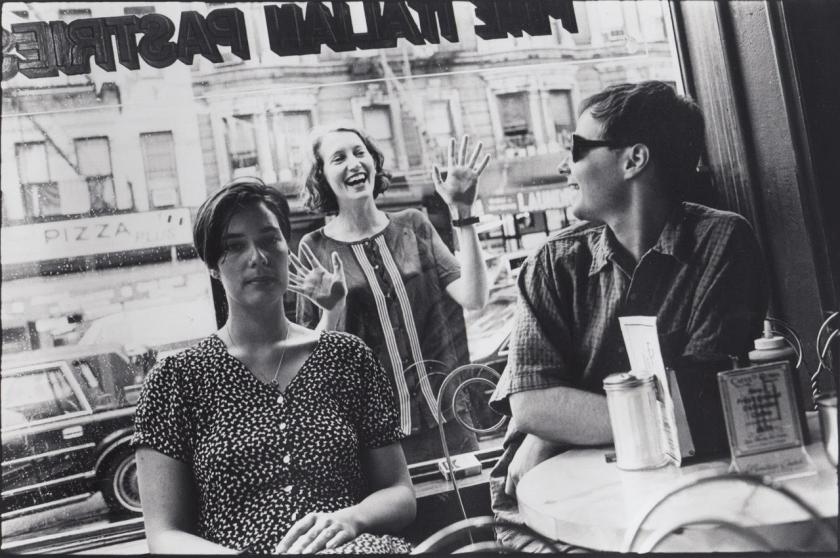




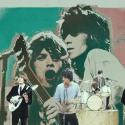
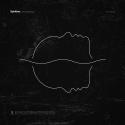

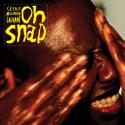

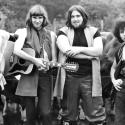

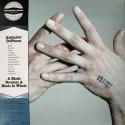
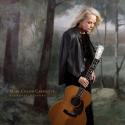
Add comment